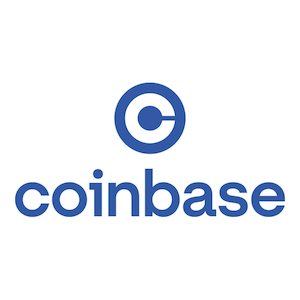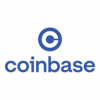- Wide crypto selection
- Quick withdrawals
- Beginner-friendly interface
- Earn-as-you-learn tools
- High transaction fees
- Poor support access
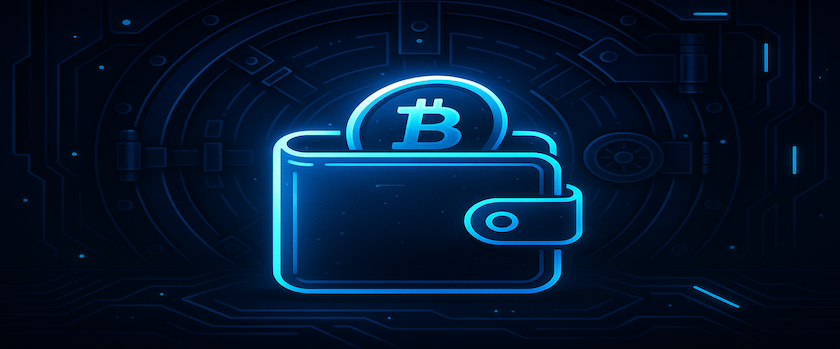 🔐 When it comes to managing your crypto, understanding the type of wallet you’re using is crucial. In this Coinbase review, it’s important to note that the default wallet provided by Coinbase is custodial, meaning Coinbase holds your private keys. This offers ease of use but less control for experienced users. However, the platform also offers a non-custodial option through its Coinbase Wallet, which puts users in full control of their keys. As for wallet classification, Coinbase falls into the “hot wallet” category—connected to the internet—unlike cold wallets such as hardware devices or paper keys.
🔐 When it comes to managing your crypto, understanding the type of wallet you’re using is crucial. In this Coinbase review, it’s important to note that the default wallet provided by Coinbase is custodial, meaning Coinbase holds your private keys. This offers ease of use but less control for experienced users. However, the platform also offers a non-custodial option through its Coinbase Wallet, which puts users in full control of their keys. As for wallet classification, Coinbase falls into the “hot wallet” category—connected to the internet—unlike cold wallets such as hardware devices or paper keys.
💸 Cost-wise, Coinbase wallets are free to open, but that doesn’t mean your crypto journey will be cost-free. This Coinbase review shows that transaction fees vary significantly depending on the asset, payment method, and platform tier. While no fee is charged to create the wallet, users should be aware of network fees and spreads, which can sometimes be higher than competitors. For traders looking to reduce costs, Coinbase Advanced and Coinbase One provide tiered fee benefits, but they come with their own eligibility requirements or monthly fees.
🛡️ Security is one of the biggest selling points—and challenges—of any crypto wallet. This Coinbase review highlights that while the platform employs a combination of Two-Factor Authentication (2FA), biometric verification, cold storage, and Multi-Party Computation (MPC) for transactions, it’s not immune to risks. The 2025 data breach exposed the vulnerabilities of even top-tier exchanges, although no funds were lost. Still, Coinbase remains one of the few exchanges offering a strong mix of institutional-grade security while providing a smooth onboarding experience for crypto newcomers.
Coinbase Registration & KYC
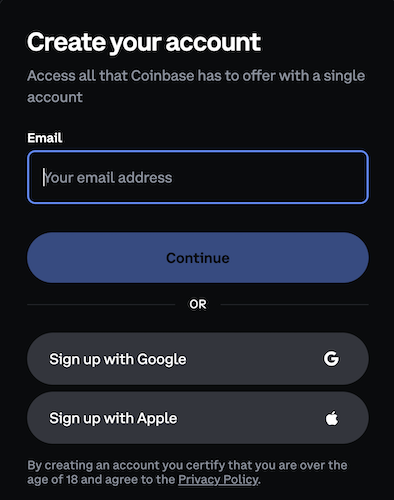 🧾 Signing up for a Coinbase wallet is a straightforward process, but it requires full identity verification. As highlighted in this Coinbase review, registration begins with basic personal details such as your name, email address, and a secure password. Once you’ve confirmed your email, the platform will prompt you to provide government-issued ID and proof of residence to satisfy Know Your Customer (KYC) regulations. Unlike anonymous decentralized wallets, Coinbase follows strict regulatory guidelines to ensure a compliant and secure environment.
🧾 Signing up for a Coinbase wallet is a straightforward process, but it requires full identity verification. As highlighted in this Coinbase review, registration begins with basic personal details such as your name, email address, and a secure password. Once you’ve confirmed your email, the platform will prompt you to provide government-issued ID and proof of residence to satisfy Know Your Customer (KYC) regulations. Unlike anonymous decentralized wallets, Coinbase follows strict regulatory guidelines to ensure a compliant and secure environment.
📸 To complete the KYC process, you’ll need to upload a valid photo ID—such as a passport or driver’s license—and take a selfie for facial verification. This Coinbase review notes that while this step may feel intrusive to some users, it’s a security requirement designed to prevent fraud, identity theft, and unauthorized access. The platform matches your photo ID with your live selfie using biometric software before activating your account for full trading and wallet functions.
🔄 Once verified, you must link a bank account or debit card to deposit or withdraw funds, which must match your registered identity. According to this Coinbase review, this adds an extra layer of financial security and compliance with global anti-money laundering laws. The verification process typically takes minutes to hours but may extend in some cases. Despite being more secure, this registration method could deter users who prioritize anonymity over regulation.
Supported Cryptocurrencies at Coinbase
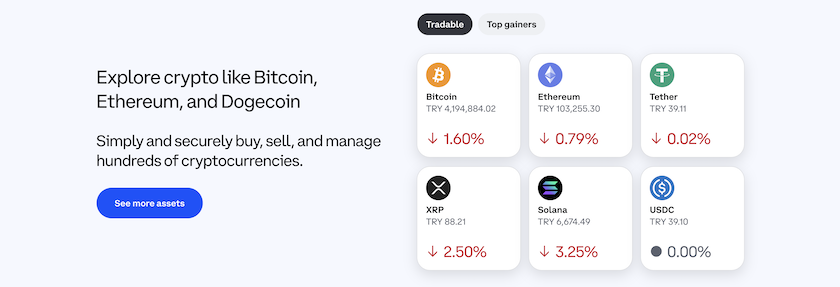 🌐 Coinbase supports one of the largest selections of digital assets among centralized exchanges. In this Coinbase review, we see that users can buy, sell, and store over 250 different cryptocurrencies, ranging from blue-chip coins like Bitcoin (BTC), Ethereum (ETH), and Solana (SOL) to emerging tokens like Polygon (MATIC) and Shiba Inu (SHIB). This expansive list ensures that both conservative and adventurous investors have plenty of trading options.
🌐 Coinbase supports one of the largest selections of digital assets among centralized exchanges. In this Coinbase review, we see that users can buy, sell, and store over 250 different cryptocurrencies, ranging from blue-chip coins like Bitcoin (BTC), Ethereum (ETH), and Solana (SOL) to emerging tokens like Polygon (MATIC) and Shiba Inu (SHIB). This expansive list ensures that both conservative and adventurous investors have plenty of trading options.
📈 Crypto-to-crypto trading pairs on Coinbase exceed 350, offering excellent flexibility for portfolio diversification. This Coinbase review confirms that users can easily convert between assets without the need to go back to fiat, which is especially useful for active traders. Additionally, Coinbase offers access to various stablecoins like USDC and DAI, which are essential for users who want to hedge against market volatility.
🧠 The platform regularly adds and delists tokens to adapt to the fast-moving crypto market. As highlighted in this Coinbase review, assets with low usage or regulatory concerns—like XRP and XLM—have been removed from certain services, while popular and trending coins are added frequently. With features like staking on select assets and educational rewards for learning about new tokens, Coinbase aims to stay relevant to both new and experienced users.
Supported Platforms for Using Coinbase
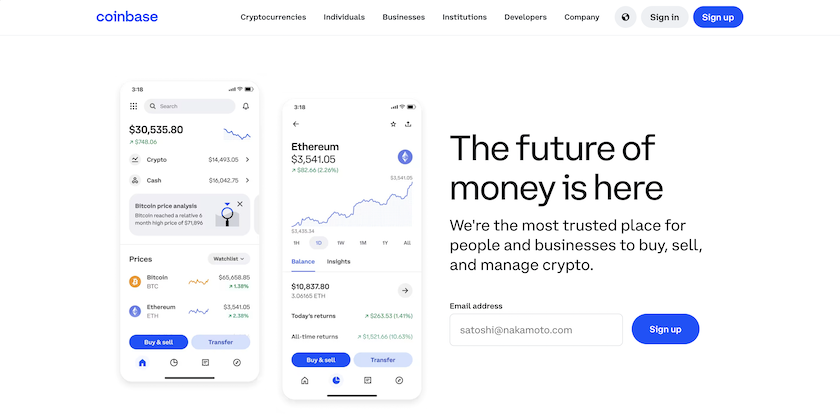 📱 Coinbase is available across multiple platforms, making it easy to manage your wallet on the go or from home. In this Coinbase review, it’s clear that the exchange offers dedicated apps for both Android and iOS, as well as a browser-based desktop experience. Whether you prefer mobile or desktop, the interface is consistently user-friendly and designed to cater to both beginners and experienced traders.
📱 Coinbase is available across multiple platforms, making it easy to manage your wallet on the go or from home. In this Coinbase review, it’s clear that the exchange offers dedicated apps for both Android and iOS, as well as a browser-based desktop experience. Whether you prefer mobile or desktop, the interface is consistently user-friendly and designed to cater to both beginners and experienced traders.
🖥️ The desktop platform gives users access to both the standard Coinbase exchange and Advanced Trade. According to this Coinbase review, desktop users benefit from advanced tools like real-time order books, TradingView chart integration, and fast switching between basic and pro interfaces. This is ideal for users who want greater control over trades while maintaining secure wallet access.
🤳 Mobile users enjoy a seamless experience that includes trading, tracking portfolios, and accessing Coinbase Wallet. This Coinbase review highlights that the mobile app is highly rated (4.7 on Apple Store, 4.5 on Google Play), and supports additional features like biometric login, instant push notifications, and even spam token detection. It’s an excellent choice for anyone who wants a powerful, yet easy-to-use crypto wallet that fits in their pocket.
Coinbase Transaction Fees
💳 While creating a wallet on Coinbase is free, using it for transactions comes with variable costs. This Coinbase review shows that fees depend on the payment method, asset type, transaction size, and whether you’re using the basic platform or Advanced Trade. For example, buying $200 worth of Bitcoin with a bank account might cost around 1.87%, while using a debit card could push that fee up significantly. It’s vital to check the preview screen before confirming a transaction to avoid surprises.
📊 Coinbase Advanced offers a tier-based fee model with lower costs for high-volume traders. As mentioned in this Coinbase review, maker and taker fees on Advanced Trade range from 0.00% to 0.60%, depending on your monthly trading volume. This makes Coinbase more appealing to frequent traders, especially those looking to reduce costs on crypto-to-crypto transactions or large-scale purchases.
💼 Optional services like Coinbase One come with extra features—but at a price. According to this Coinbase review, Coinbase One is a $29.99 monthly subscription that offers zero trading fees, priority customer support, and tax filing tools. However, casual users may not benefit enough to justify the cost. In addition, the platform also charges blockchain network fees for moving crypto off the exchange, which vary based on congestion and coin type.






